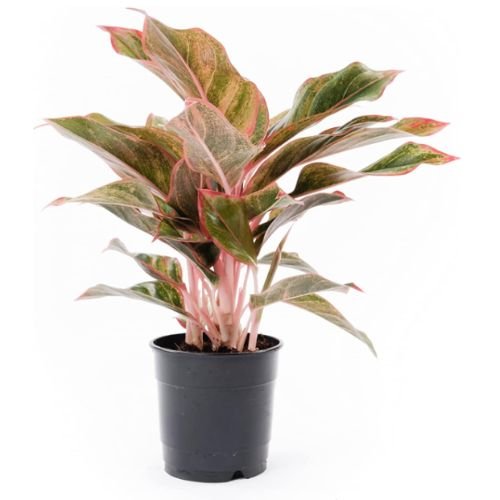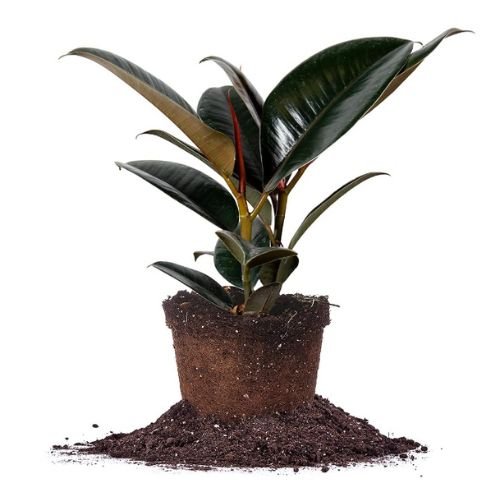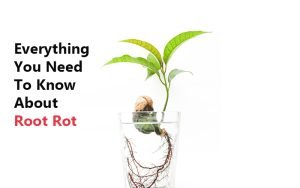In the hustle and bustle of modern life, we often overlook the air quality we breathe indoors. And while there are some really good air purifiers in the market, adding a few natural purifiers around the house is an added advantage. In fact, you can always do a bit of both because, unlike air purifiers, these plants add a layer of natural beauty to your home as well.
While most plants have some air-purifying qualities, some are better at it than others. In this article, we have handpicked 5 indoor air-purifying plants that are easy to maintain and perfect for beginners.
1. Areca Palm (Dypsis lutescens)
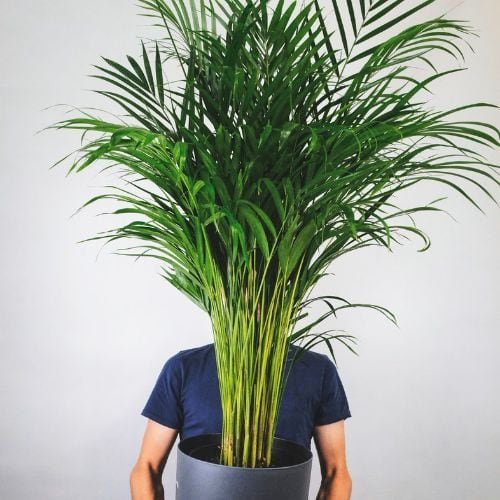
Areca Palm, also known as the butterfly palm or golden cane palm, is not only a visually appealing addition to any indoor space but also an excellent air purifier. Originating from Madagascar, this tropical plant thrives in bright, indirect sunlight and well-drained soil.
Air Purification Qualities:
Removal of Formaldehyde: Areca Palm excels in removing formaldehyde from indoor air, a common indoor air pollutant found in carpets, upholstery, and various household products.
Humidity Regulation: This plant also acts as a natural humidifier, releasing moisture into the air, which can be beneficial, especially in dry indoor environments.
Enhanced Air Quality: By absorbing carbon dioxide and releasing oxygen, Areca Palm contributes to a healthier indoor environment, promoting better respiratory health and overall well-being.
Areca Palm Care
The plant is not finicky and can thrive even in partially shaded indoor areas as long as it gets 2 hours of sunlight in a day. It can withstand warmth, humidity, and most soil conditions. They mainly struggle with extremely cold conditions.
Although the plant can grow up to 6 to 10 feet, it is a slow-growing plant and requires the pot to be replaced every 2-3 years. Make sure the new pot is only slightly bigger than the old pot because this plant likes tight and snug places for its roots.
The plant is hardy under the right conditions, but it will not tolerate neglect. Water the plant after every few days when the soil appears slightly dry. It does require a slow-releasing fertilizer every few months especially right before the growth session.
Here are some good slow-release fertilizers that will work for your Areca Palm:
The Areca palm thrives under conditions that humans would call ‘pleasant’. In fact, it works as an air purifier and as a humidifier, making it perfect for dryer regions. Avoid moving it around too much, because it does not enjoy frequent changes in their nearby surroundings. As long as you find it a place that receives at least 2 hours of sunlight and provide it the care mentioned above, you are looking at a decade-long plant companion.
2. Snake Plant (Sansevieria trifasciata)
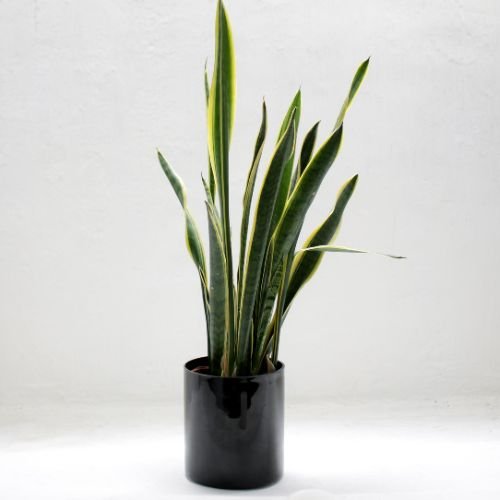
Snake Plant, also known as mother-in-law’s tongue, is a hardy and low-maintenance plant that thrives in a variety of indoor conditions. Originating from West Africa, this striking plant is characterized by its tall, upright leaves with variegated patterns.
Air Purification Qualities:
Removal of Benzene and Formaldehyde: Snake Plant is highly effective in removing benzene and formaldehyde from indoor air, making it ideal for bedrooms and living spaces.
Nighttime Oxygen Production: Unlike most plants that release oxygen during the day, Snake Plant continues to produce oxygen at night, making it a perfect bedroom companion for better sleep quality.
Low Maintenance: With its ability to thrive in low light conditions and withstand neglect, Snake Plant is an excellent choice for busy individuals looking to improve indoor air quality without much effort.
Snake Plant Care
A Snake Plant is easy to care for. They enjoy dryer conditions and well draining, sandy soil. If you want to pot it in a pre-mixed soil, you can go for potting mixes made for cacti, as they prefer similar conditions.
Interestingly, overwatering causes death for these plants in most cases. Always make sure the soil is completely dry before watering and water the plant till it flows out of the container. During summer this can be once a week and during the winter, it can go up to once a month.
This plant is accustomed to harsher climates so they grow well without a fertilizer; but if you want to maintain the plant’s health and well-being, you can give it a slow-release fertilizer with equal quantities of nitrogen, phosphorus and potassium, diluted to half the strength. Fertilizers work best when added around the growing season, which is spring and summer.
How To Propagate a Snake Plant?
There are 2 popular ways of propagating a snake plant:
a) The Division Method
Snake plants usually produce ‘pups’, which are baby snake plants propagating slightly away from the mother plant. When you are ready to re-pot your snake plant, you can take it out of the pot, and identify the pups that will be slightly away from the mother plant. Brush off the soil around the pup and identify the rhizome – which is the thick root that provides nutrients from the mother to the pup. Separate the roots from the mother plant, and make a clean cut on the rhizome from the top to the bottom, separating it from the mother in a single cut.
Pot the pups in the same sandy, well-draining potting soil and keep it in a shaded area for a few days. Once the pup has established its roots on the ground, you can water it and provide it the regular lighting conditions as you would to a regular Snake plant.
b) From Leaf Cuttings
This method takes more time and has a lower success rate. However, it does not require you to uproot a plant, which is why plant lovers are most likely to give this method a try. Simply find a long healthy leaf in your snake plant and cut it in a single motion from the base.
Place the base of the cut leaf in a glass of water and keep it in a shaded area. Remember to change the water once every few days so that the leaf receives ample nutrients to sprout roots. In a few weeks you will notice fresh roots on the leaf. Now is a good time to pot it in a well-draining sandy soil. Keep it in a shaded area for a few days and water it when the soil is dry. Once the plant has established its roots on the pot (or does not feel loose when you touch it) you can provide it with the regular conditions as you would with a snake plant.
3. Arrowhead Plant (Syngonium podophyllum)
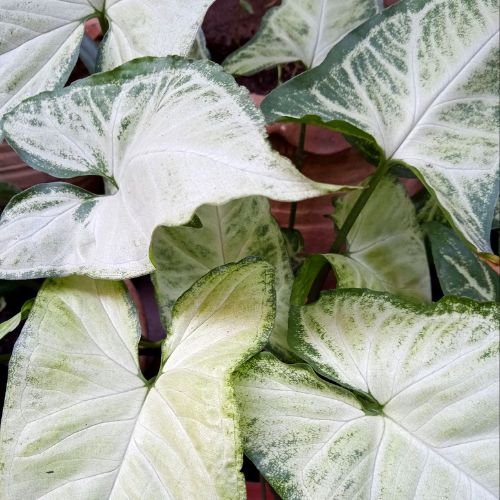
Arrowhead Plant, also known as arrowhead vine or goosefoot plant, is a versatile and decorative plant that adds a touch of elegance to any indoor space. Native to tropical rainforests in Central and South America, this plant is prized for its arrow-shaped leaves and vibrant foliage.
Air Purification Qualities:
Removal of Airborne Toxins: Arrowhead Plant is effective in removing airborne toxins such as formaldehyde, benzene, and trichloroethylene, commonly found in household products and synthetic materials.
Compact Growth Habit: With its compact growth habit, Arrowhead Plant is perfect for small spaces like desks, shelves, or tabletops, where it can beautify the surroundings while purifying the air.
Easy Care Requirements: This plant thrives in indirect light and regular watering, making it suitable for novice gardeners or those with limited gardening experience.
Arrowhead Plant Care
Now here’s a plant that loves humidity. The plant requires a well draining soil, few hours of bright indirect sunlight and humid conditions. This plant enjoys similar climatic conditions as we do; so the plant will thrive in 65 to 80°F (18-27°C). If hotter or cooler regions, the plant may experience slower growth. Consistency is key with this plant. So, even if your area gets hotter and cooler than the optimum temperature, you should keep the plant in a slightly shaded area where the temperature is consistent.
Just like the Snake Plant, the Arrowhead can die from overwatering. When the plant is overwatered and gets too much direct sunlight, you will notice it’s colors fading away and the plant drooping. In this case, you should wait for the soil to dry out completely before watering. A healthy Arrowhead plant should be watered deeply (or rather, till the water comes out of the other end of the container) whenever the soil is partially dry. To check the moistness of the soil, you should put your finger a few inches inside the soil. The top soil needs to be dry and the soil underneath should be dry enough to not stick to your finger yet there is some residue moistness, that is the perfect time to water an arrowhead.
4. Aglaonema (Aglaonema spp.)
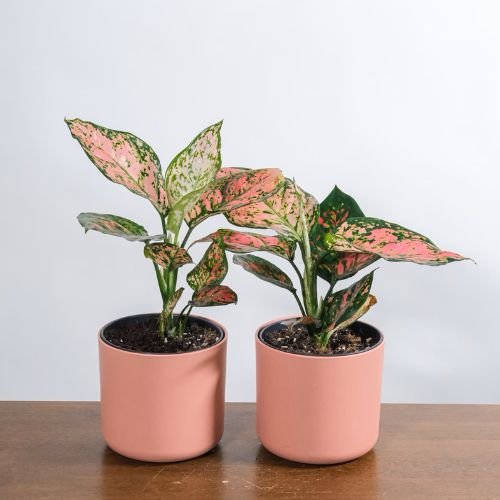
Aglaonema, also known as Chinese evergreen, is a popular indoor plant valued for its attractive foliage and air-purifying qualities. Native to tropical and subtropical regions of Asia, this resilient plant is available in a variety of leaf colors and patterns.
Air Purification Qualities:
Filtering of Airborne Pollutants: Aglaonema is effective in filtering airborne pollutants such as formaldehyde, benzene, and trichloroethylene, making it an excellent choice for improving indoor air quality.
Adaptability to Low Light Conditions: With its tolerance for low light conditions, Aglaonema thrives in indoor environments with limited natural light, making it suitable for offices, bedrooms, or bathrooms.
Aglaonema Plant Care
The Algaonema is native to Asia and is slightly less common in the United States. However, if you get the temperature and lighting conditions right, this plant is relatively easy to take care of. Make sure you pot it in well-draining soil that has a blend of perlite and sand. There are mixed opinions of adding coco peat in the soil. Since the plant is very sensitive to root rot, cocopeat may not be the best addition to the soil.
Aglaonemas come in many color varieties however the green ones are easier to take care of than the variegated and white and red varieties. Aglaonemas don’t need a lot of fertilizer, but if you want to see lush green growth, you can go for a liquid houseplant fertilizer and use it once a month during the summer season.
It is normal for the Aglaonema to lose leaves and grow new ones but usually, when they start to fade in color or droop down, it may be a sign of poor health, or overwatering. You must always check 1 inch of the soil and make sure it is dry before watering it again.
Aglaonema can also lose its colors if it gets too much sunlight. Sheer curtains are especially handy for the Aglaonema plant. They will not only cast textured light into your home, but make your Aglaonema look bright and vibrant.
Buy A Live Aglaonema Plant Today:
5. Rubber Plant (Ficus Elastica)

Rubber Plant, also known as rubber tree, is a popular indoor plant prized for its large, glossy leaves and air-purifying properties. Native to Southeast Asia, this tropical plant is well-suited to indoor environments, where it can thrive with proper care.
Did you know that even NASA has recommended the rubber plant for its air-purifying qualities? Since it is relatively easy to care for it will be a great addition to your home.
Air Purification Qualities:
Removal of Airborne Toxins: Rubber Plant is effective in removing airborne toxins such as formaldehyde, benzene, and ammonia, commonly found in household products and cleaning agents.
Enhanced Humidity Levels: With its large leaves, Rubber Plant helps to increase humidity levels in indoor spaces, which can be beneficial, especially during the dry winter months.
Tall and Stately Growth: With its tall and stately growth habit, Rubber Plant makes a bold statement in any indoor setting, while also providing natural air purification benefits.
Baby Rubber Plant Care
Usually, a fully grown rubber tree is too expensive, that’s why people prefer to get it home when it is a baby. This plant tends to thrive in humid climates but can withstand dryness as well. What it doesn’t tolerate is overwatering. When the plant is overwatered it starts to get yellow leaves that wilt and fall out. Make sure the soil is completely dry between waterings.
The plant also requires 6 to 8 hours of indirect sunlight. So place it near the window that gets a lot of sun. If the sun is too bright even through a window, you can use sheer curtains to dim it down. Your rubber plant will love it.
These plants grow up to 10 feet indoors and 30 feet outdoors but they are slow growing plants. Their growth gets stunted during the winter season and begins during the spring and summer seasons.
Although they don’t need to be fertilized often; once a year during the growing season should be enough. They thrive in nitrogen fertilizers so always opt for fertilizers with slightly higher levels of nitrogen.
Lastly, although they are hardy plants they are prone to few fungal infections and mealy bugs. A neem oil treatment helps keep these tiny white bugs at bay. Make sure to separate the infected plant from others to prevent cross-contamination.
Buy A Live Rubber Plant Now:
Final Note
It doesn’t hurt to go that extra mile to keep our environment free from toxins, especially if this mile involves a lot of aesthetically pleasing greenery. Bear in mind that while all these plants are low maintenance and work well as natural air purifiers, they are mild to moderately toxic if ingested. Please keep them away from curious pets and children. As long as you are cautious, these plants can be a great addition for a toxin-free home environment.


